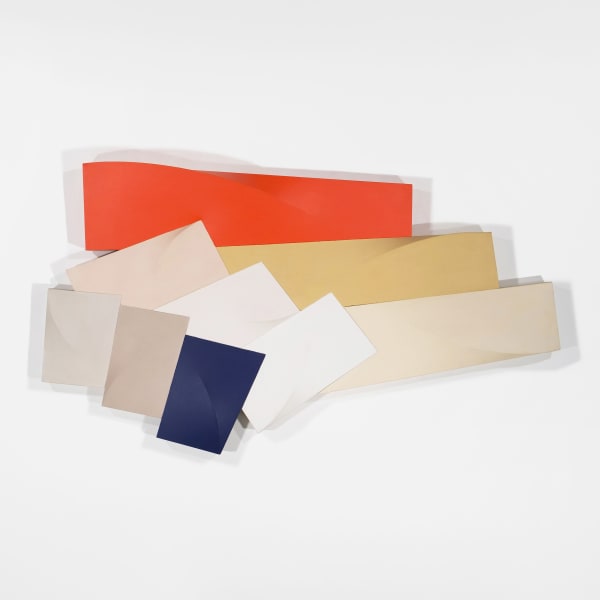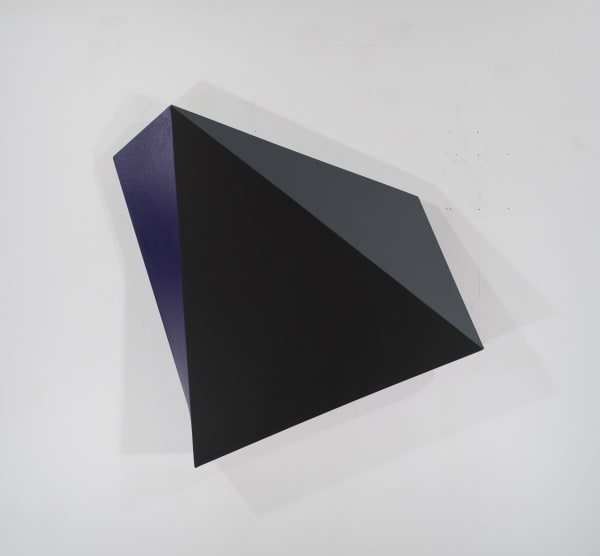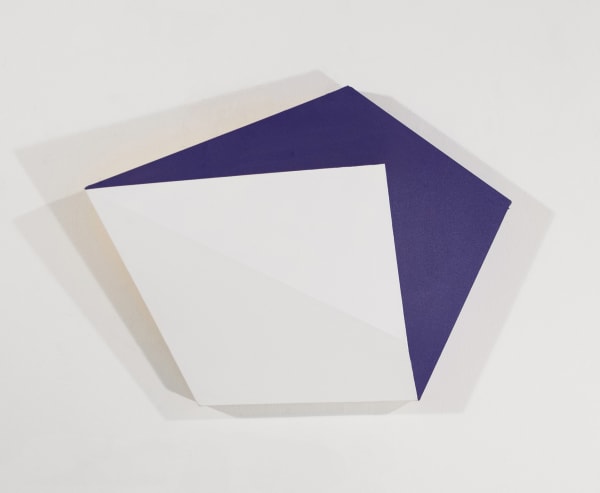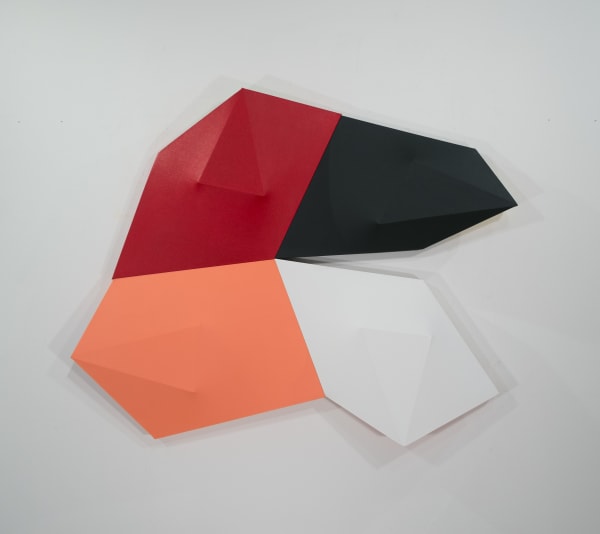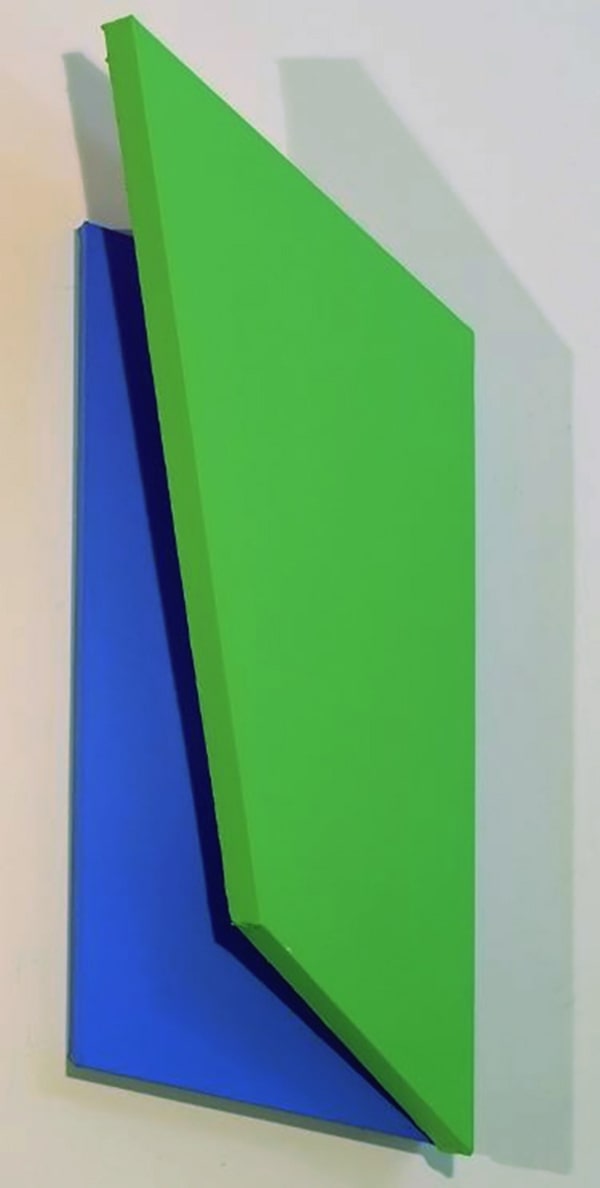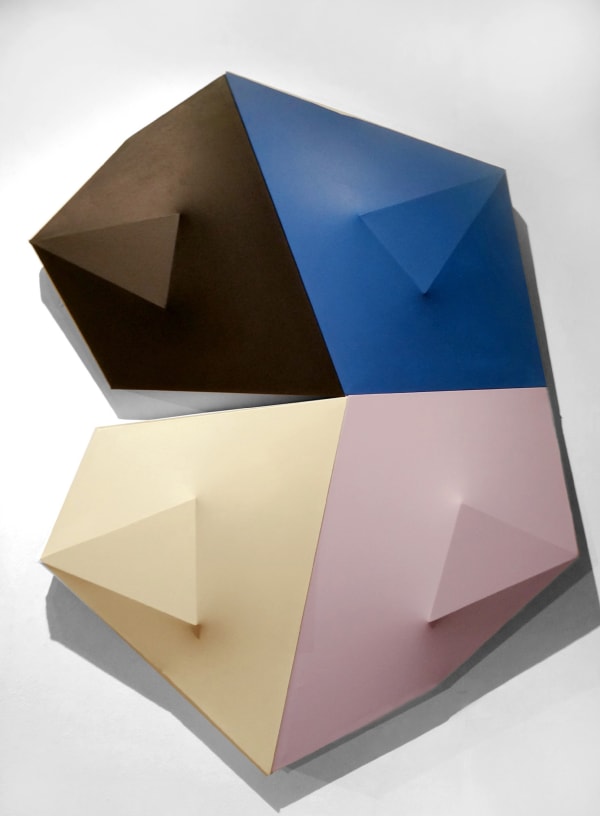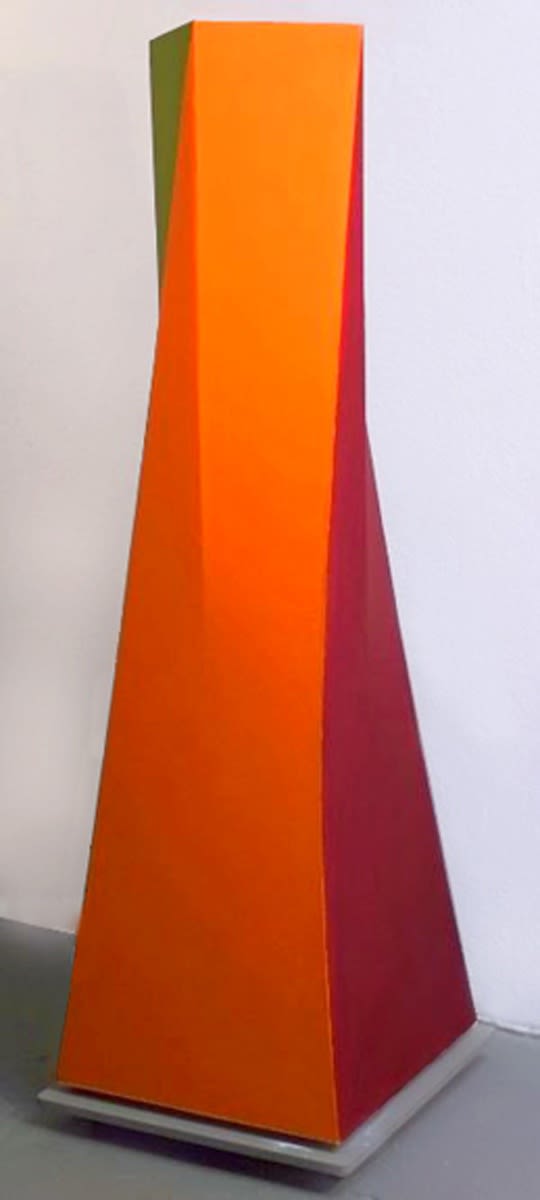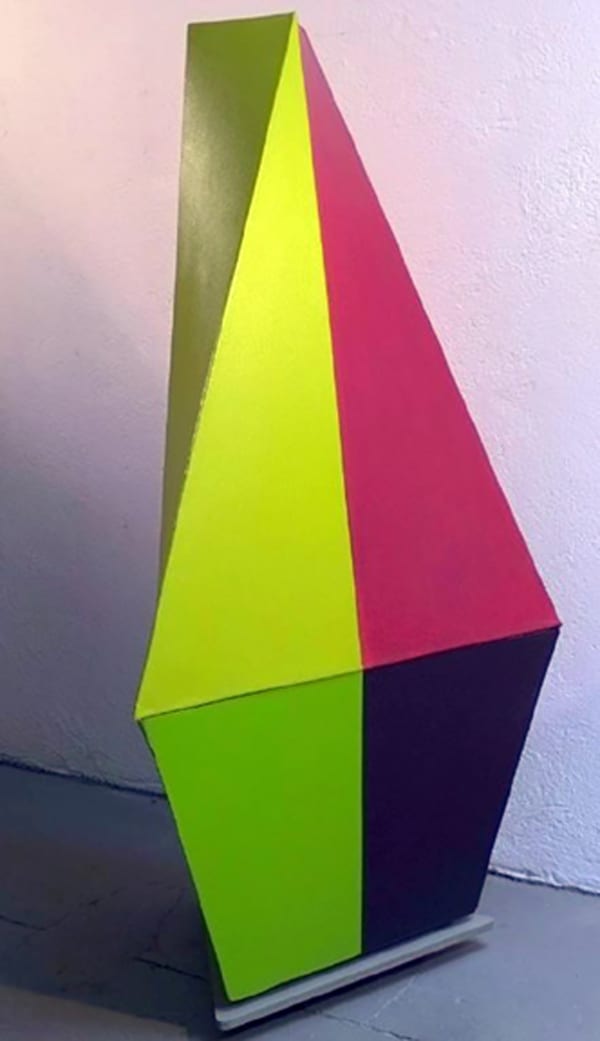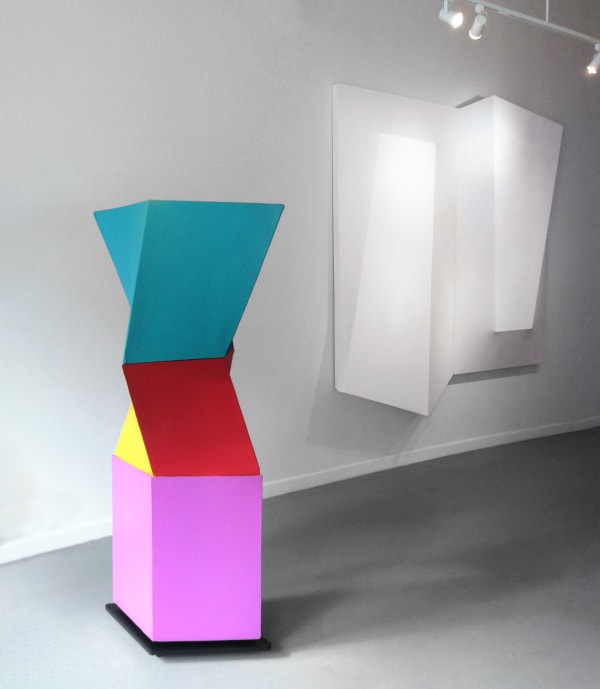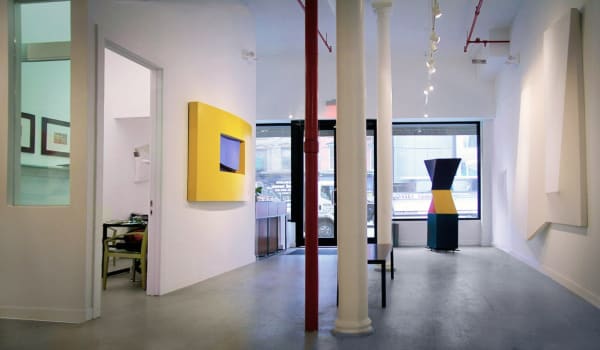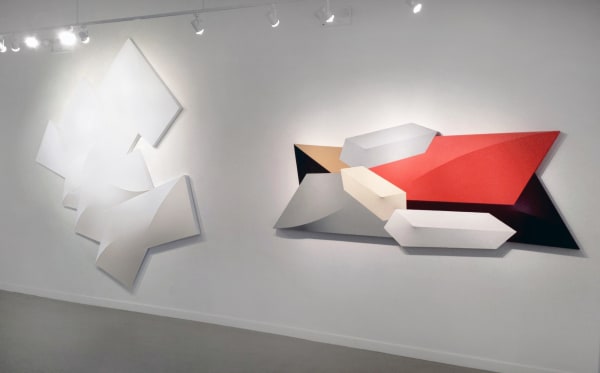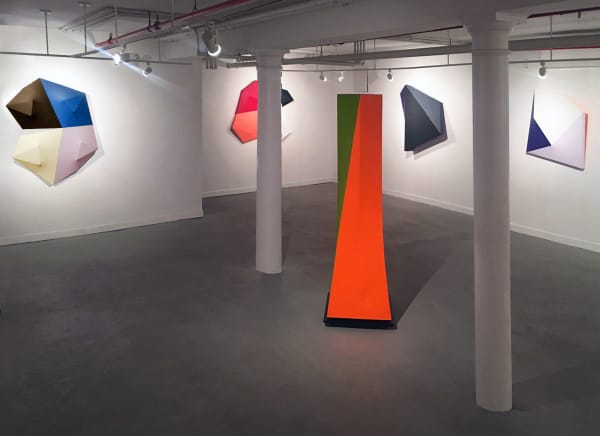Charles Hinman: Shaped Paintings
This exhibition highlights the artist’s innovative process and his enduring influence on contemporary abstract painting and spatial form in the New York art scene.
-
 Charles Hinman, Aeolus, 1989
Charles Hinman, Aeolus, 1989 -
 Charles Hinman, Megaripple, 1988
Charles Hinman, Megaripple, 1988 -
 Charles Hinman, Gathering Force, 1985
Charles Hinman, Gathering Force, 1985 -
 Charles Hinman, Dusk to Dawn, 2014
Charles Hinman, Dusk to Dawn, 2014
-
 Charles Hinman, Emerald, 2010
Charles Hinman, Emerald, 2010 -
 Charles Hinman, Beckett, 2006
Charles Hinman, Beckett, 2006 -
 Charles Hinman, Violet Wings, 2014
Charles Hinman, Violet Wings, 2014 -
 Charles Hinman, Purple Purpose, 2014
Charles Hinman, Purple Purpose, 2014
-
 Charles Hinman, Indochinite, 2013
Charles Hinman, Indochinite, 2013 -
 Charles Hinman, Onyx, 2012
Charles Hinman, Onyx, 2012 -
 Charles Hinman, Purple Majesty, 2014
Charles Hinman, Purple Majesty, 2014 -
 Charles Hinman, Blue Over, 2014
Charles Hinman, Blue Over, 2014
-
 Charles Hinman: Shaped Paintings | Installation View
Charles Hinman: Shaped Paintings | Installation View -
 Charles Hinman: Shaped Paintings | Installation View
Charles Hinman: Shaped Paintings | Installation View -
 Charles Hinman: Shaped Paintings | Installation View
Charles Hinman: Shaped Paintings | Installation View -
 Charles Hinman: Shaped Paintings | Installation View
Charles Hinman: Shaped Paintings | Installation View -
 Charles Hinman: Shaped Paintings | Installation View
Charles Hinman: Shaped Paintings | Installation View -
 Charles Hinman: Shaped Paintings | Installation View
Charles Hinman: Shaped Paintings | Installation View -
 Charles Hinman: Shaped Paintings | Installation View
Charles Hinman: Shaped Paintings | Installation View -
 Charles Hinman: Shaped Paintings | Installation View
Charles Hinman: Shaped Paintings | Installation View -
 Charles Hinman: Shaped Paintings | Installation View
Charles Hinman: Shaped Paintings | Installation View -
 Charles Hinman: Shaped Paintings | Installation View
Charles Hinman: Shaped Paintings | Installation View
WESTWOOD GALLERY NYC presented a solo exhibition of New York artist Charles Hinman (b. 1932) as part of its program of exhibitions and events dedicated to artists in the Bowery Arts District, past and present. The exhibition of 40 artworks, spanning from the 1970s until 2014, included a curated selection of shaped canvases, drawings and sculpture highlighting the artist’s unique process. On view were artworks such as White Rise (1974) a minimalist white column consisting of three prisms that emphasizes the force of negative space and shadows. Also on view were artworks from the Gem series, recently exhibited at the Butler Institute of American Art, Youngstown, Ohio, and large scale paintings such as Phoenix (1989), 8 x 12 ft, a compelling interaction of rectilinear forms constructed with nine canvases, each with a subtle protruding arc creating movement in the work.
Hinman's art career began in the 1960s with a seminal exhibition, 7 New Artists at Sidney Janis Gallery, followed by a solo exhibition at Richard Feigen Gallery in 1964. Other important 1960s exhibitions include the Tibor de Nagy 1965 exhibition curated by Frank Stella and Henry Geldzahler (with Donald Judd, Carl Andre, and Will Insley); Art in Process: The Visual Development of a Structure at Finch College Museum of Art, May 1966 (Donald Judd, Sol LeWitt, Robert Morris, Robert Smithson, Charles Hinman, Will Insley, and Sven Lukin); Young America at The Whitney Museum of American Art, 1965, and Art Institute of Chicago's annuals in 1966 and 1969. His work was represented by Galerie Denise René in New York and Paris, as well as Hans Mayer in Düsseldorf. For the next forty years Hinman’s work was exhibited worldwide and expanded to commissions, such as The Wooden Dove, spanning almost 50 feet across.
In the leading art publication, The New American Abstraction 1950-1970, Claudine Humblet defines Hinman's work as challenging inertia and the force of gravity, sometimes connected with the interpretation of the aesthetics of "primary structures." In Humblet’s view, Hinman's work was intended solely to be regenerated within its own parameters: the "three dimensional character of the canvas object", the "painted illusory or pictorial image," and the "feeling of the picture plane or the flatness of the wall."
Charles Hinman’s paintings have explored the boundaries of light, shadow and shape through elaborate three-dimensional wood structures created according to mathematical formulas. The canvases are painted in primary colors and tones to create an interplay between real and elusive forms and structures. Often, the painted angular sides generate the illusion of color in the shadows. The artworks expand beyond the traditional rectangular picture plane into the realm beyond the artwork, exploring the very nature of three-dimensionality. Color interaction is essential to Hinman’s process and the colorful shadows connect him to Light and Space artists like James Turrell. The interplay of hue, light and form energizes the canvases as well as the surrounding area with shifting perceptions and reflective color, depending on the vantage point. In Hinman’s words, “As the viewer passes a multi-dimensional object, the line of sight moves and causes the perception of change in the shape of the object. As light transitions across the surface of the painting, it affects the way in which the color is perceived. In brighter illumination, the color pales – in shadow, it deepens. The simplest of paintings becomes quite complex when all these factors are considered.”
Born and raised in Syracuse, New York, Hinman received his BFA from Syracuse University in 1955 and went on to study at the Arts Student League of New York. In the early 1960s he shared a studio with James Rosenquist on the historic Coenties Slip in Lower Manhattan. There, he was part of a community of prominent artists of the time including Agnes Martin, Robert Indiana, and Ellsworth Kelly. He moved into a larger studio on the Bowery in 1965 alongside Will Insley and Max Gimblett, where he still resides. During his Bowery years, Hinman’s work has been exhibited and collected by major institutions and collectors around the world. His artwork is included in the permanent collections of the Whitney Museum of American Art, the Museum of Modern Art, the Los Angeles County Museum of Art, the Hirschhorn Museum and Sculpture Garden, the Denver Art Museum, the Nagaoka Museum in Japan, the Tel Aviv Museum in Israel, among others. He is the recipient of Guggenheim Fellowship and four Pollock-Krasner Foundation grants.



